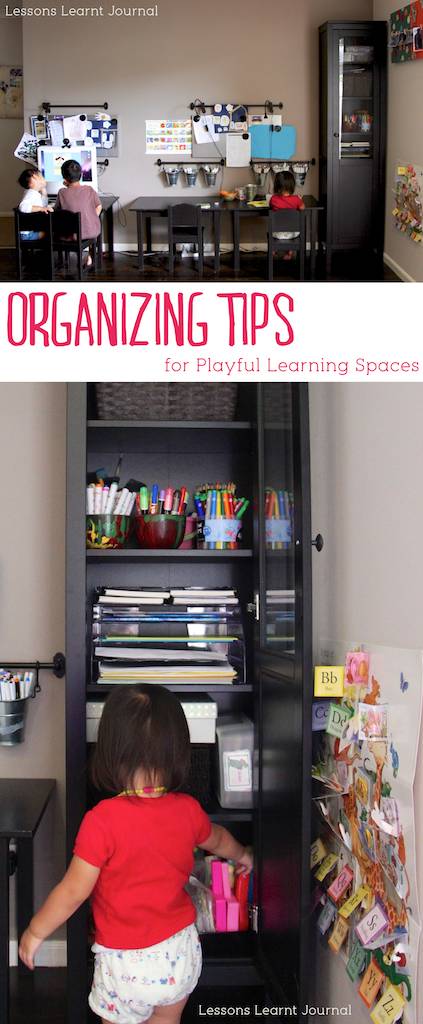
It’s been almost two years since we first set up and organized a playful learning space in our main living area, the writing centre and atelier. It still remains a special nook in our home for our children (and their friends), to independently play, learn and create.
In these two years, some things have not changed: our home is still small; this space still accommodates for up to four children comfortably.
In these two years, some things have changed. We’ve moved tables around, moved bookcases around, bought a new cabinet for storage, tried different combinations of tables and chairs, left out different resources and materials for children to use in this playful learning space, etc.
If you are setting up a writing centre or atelier in your home, here are five organizing tips from us:
1. Try to keep things readily available. Equip children to be autonomous and independent learners. Provide them with the tools they need to play, explore and express themselves – without them having to ask you for permission to do so. Set up the space to encourage children to take charge of their own learning. Provide opportunities for children to lead their own learning.
2. Value the art of display. Give an impression of a well cared for physical environment. Taking care and giving attention to the things within a space, and the things done within that space is the opposite of indifference. Promote curiosity and wonder. Include inviting materials, striking products and visual stories of learning by children.

3. Consider placing a computer in the area. The computer has become a great resource for playful learning in our home. There are so many helpful educational online resources that open up a world of investigations and discussions. Our favourite educational online resource at the moment is BrainPop Jr. From an organisational and safety point of view, I find it particularly helpful that the computer is in a central part of the home that can be easily seen. I can see and hear what they are doing at any given time, when they are on the computer. Even if I am in the kitchen preparing a meal, or cleaning up after a meal, (which feels like a good part of my day!), I can see what my children are seeing on the computer monitor, and hear what my children are hearing.
4. Some tools and resources to consider for a playful learning space: various containers for materials; printer; digital camera; play dough; clay; wires of different thicknesses; play dough / clay tools; tape recorder; microscope; easels for painting; different colours, consistencies and shades of paint for painting; different materials to paint with; recycled and discarded materials; loose parts to create and play with; different colours, thicknesses and textures of paper and cardboard to create with; different types of books and pages to write on; various displays for a print rich environment.

5. Less is best. Oh… so much easier said than done. I find it so hard to cull resources, so I try to be fussy about what I put on display and what is available for children to use. My art and resources cupboard in our garage however… that’s a different story.
If you enjoyed this post, please consider leaving a comment; I’d love to hear from you. If you are new here, you might like to receive updates direct to your email. We have many fun ideas to share.
















